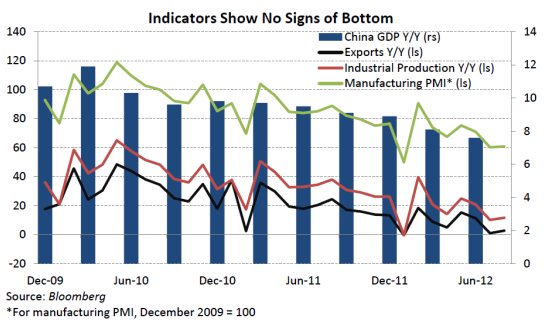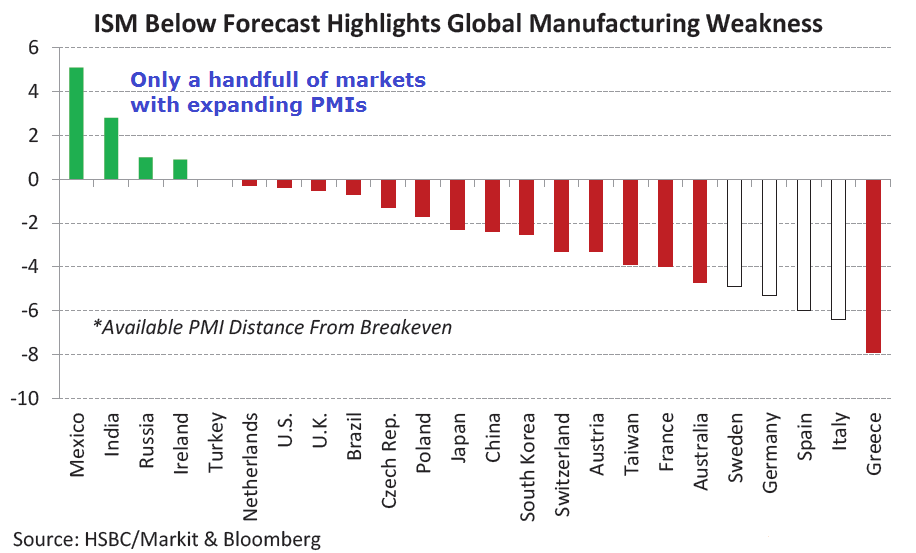The Fed’s “All-In” move may keep the house of cards from folding until 2013 and greatly help Obama limp over the finish line, but it shall prove to be the last silver bullet before a long period of economic, social, political and spiritual upheaval grips America for years to come.

While the junior resource market left egg on my face this year, I’m very pleased with how I approached the rest of the markets I follow. Here’s a quick update on them.
U.S. Stock Market – It’s worth repeating my constant cry that many times it’s not what you make but what you don’t lose that makes you a winner over time. Despite numerous questioning on why I still won’t short the U.S. stock market and almost daily emails showing me why such a decision shall prove wrong, the fact is the market has reached highs not seen in years.
The marginal new high I spoke of is well within reach now. But as it has been since day one, such a feat would be the completion of the greatest bear market rally in a secular bear market that can eventually retest the lows made in early 2009. It shall have to endure a long period of economic, social and political upheaval that shall be longer and harder than most could ever imagine.
Such a period is still months or even a year or so away but starting to plan for it while the “Don’t Worry, Be Happy” crowd runs wild with the FED’s “All-In” is strongly suggested.

U.S. Bonds – The very fact that many in the last 18 hours or so expressed a belief that bonds can’t lose during this “All-In” phase is the icing on the cake I desired for fulfilling my “worst investment for the next 10 years” belief of bonds. There’s no rush to establish a short position but the closer the 10-year T-Bond drops towards a 1.25% yield, the more I would want to be short. When the dark days come (and in my book it’s a question of when, not if), rates shall rise like they did through Europe the last couple of years despite overall weak economics.

U.S. Dollar – Direction? Go and see how many people dare suggest the Euro could see a major short covering rally well over $1.25 just a couple of weeks ago. Try to understand how almost 96% bulls on the U.S. Dollar in the currency futures markets are now getting crushed.

Gold – While we can see a period of consolidation on either side of $1,800, the upside remains wide open. Go back and look and see what was being said when gold was in the low $1,500’s. Bears were running wild and the vast, vast, vast majority of gold commentators had turned very cautious, if not outright bearish. Let it not be said that at a critical point, yours truly was willing to bet $2 million reasons why gold was going over $2,000.
Any and all excess was washed out in the almost year-long correction/consolidation so it shall likely be a long period before we get seriously overbought again. The perma-bears have never grasped the earth-shattering changes to the gold market and much of the financial media shall continue to follow these pied-pipers over the cliff as gold marches towards and over $2,000.

Oil and Natural Gas – No changes here.
And finally, the junior resource market has seen its horrific lows and while it can work higher for the balance of the year, the wounds are deep and the need to finance great. This shall limit the rebound but once we get near years-end, the rebound can gather a longer-lasting head of steam and help 2013 make 2012 just a bad memory. Remember, I never said to assign anything more than capital that you’re mentally and financially prepared to lose part or all of. These vicious bear markets in a business where failure is the norm always ends up showing most didn’t meet this requirement. How do I know this? A sampling of the hate mail does it all the time. I just wish my wife stop writing-lol

Ed Note: Be sure to check out Peter’s website for updates on markets, the economy and individual stocks: Grandich.com

About Peter Grandich:
Though he never finished high school, Peter Grandich entered Wall Street in the mid-1980s with no formal education or training and within three years was appointed Vice President of Investment Strategy for a leading New York Stock Exchange member firm. He would go on to hold positions as a Market Strategist, portfolio manager for four hedgefunds and a mutual fund that bared his name.
His abilities has resulted in hundreds of media interviews including GMA, Neil Cavuto’s Your World on Fox News, The Kudlow Report on CNBC, Wall Street Journal, Barron’s, Financial Post, Globe and Mail, US News & World Report, New York Times, Business Week, MarketWatch, Business News Network and dozens more. He’s spoken at investment conferences around the globe, edited numerous investment newsletters, and is one of the more sought after commentators.
Grandich is the founder of Grandich.com and Grandich Publications, LLC, and is editor of The Grandich Letter which was first published in 1984. On his internationally-followed blog, he comments daily about the world’s economies and financial markets and posts his views on social and political topics. He also blogs about a variety of timely subjects of general interest and interweaves his unique brand of humor and every-man “Grandichism” expressions with his experience gained from more than 25 years in and around Wall Street. The result is an insightful and intuitive look at business, finances and the world, set in a vernacular that just about anyone can understand. In his first year, Grandich’s wildly-popular blog had more than one million views. Grandich also provides a variety of services to publicly-held corporations on a compensation basis.
Grandich’s autobiography, Confessions of a Wall Street Whiz Kid, was publiched in fall 2011.
He is the also the founder of Trinity Financial Sports & Entertainment Management Co. [www.TrinityFSEM.com], a firm with a Christian perspective which he started in 2001 with former NY Giant and two-time Super Bowl champion Lee Rouson. The firm offers services to celebrities, athletes and average folks. Peter Grandich is a member of the National Association of Christian Financial Consultants, and a long-standing member of The New York Society of Security Analysts and The Society of Quantitative Analysts.
Grandich is also very active in Christian sports ministries including the Fellowship of Christian Athletes and Athletes in Action.
He resides in New Jersey with his wife Mary and daughter Tara.















